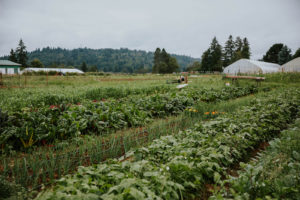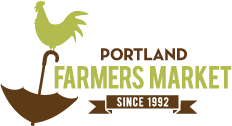by Michelle Week of Good Rain Farm
Every year by November I have put my farm to rest. But my mind is still a whirl—dreaming, scheming, thinking, wondering. This past year has prompted a significant amount of self reflection and improvement. I am grateful for resilient friendships whose conversations have been the bedrock of my ability to process, stretch and grow. I am grateful for the bounty of Summer and always enjoy the windfall of Autumn harvests that take all we can give to haul inside and store fresh produce for the long Winter months.
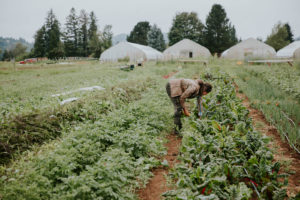
We have great big plans on Good Rain Farm to make traditional preserves available throughout the cold months. While we may never farm year round (does the soil not deserve a bit of rest?!) we look forward to supporting you more comprehensively during pantry season—as we’ll call it. To truly eat local, within the season, we must practice preserving the previous season. This year we’ll be deprived of large tables full of food that are crowded by family and friends. I’ve always enjoyed sitting quietly in a room full of cheer. Unfortunately alongside the cheer, for many years now, Thanksgiving in the midst of National Native American Heritage Month feels like a cruel ironic joke.
For a little over 60 years, my tribe, the Sinixt or the Arrow Lakes, were considered extinct. I grew up knowing I was Native, but not allowed to ask further questions or share this fact about myself. I learned the prevalent myth that Benjamin Franklin had wanted the Turkey, Native to the Americas, to be the National Bird, and grew up acting out the classic grade school myth of the pioneers being saved from starvation by the noble Savage. Even in that story the specifics of where that cornucopia of food came from was obscured, erased, silenced, much like my identity. No good deed goes unpunished as they say. There’s always much to be thankful for, I am thankful for the sacrifices made so that my existence could be realized. I am thankful for resilient, bold, strong ancestors who survived famine, persecution, pandemics, and colonization. You, reader, no doubt have family not so long ago and so long forgotten to thank for surviving similar burdens. I’m thankful for sweet, tangy berries, savory squash, garlic sauteed greens and all the nutrition the world provides that asks so little in return. At x̌ast sq̓it (hast squeit), Good Rain, we farm in reverence, we give our thanks everyday, in practice, presence, intention.
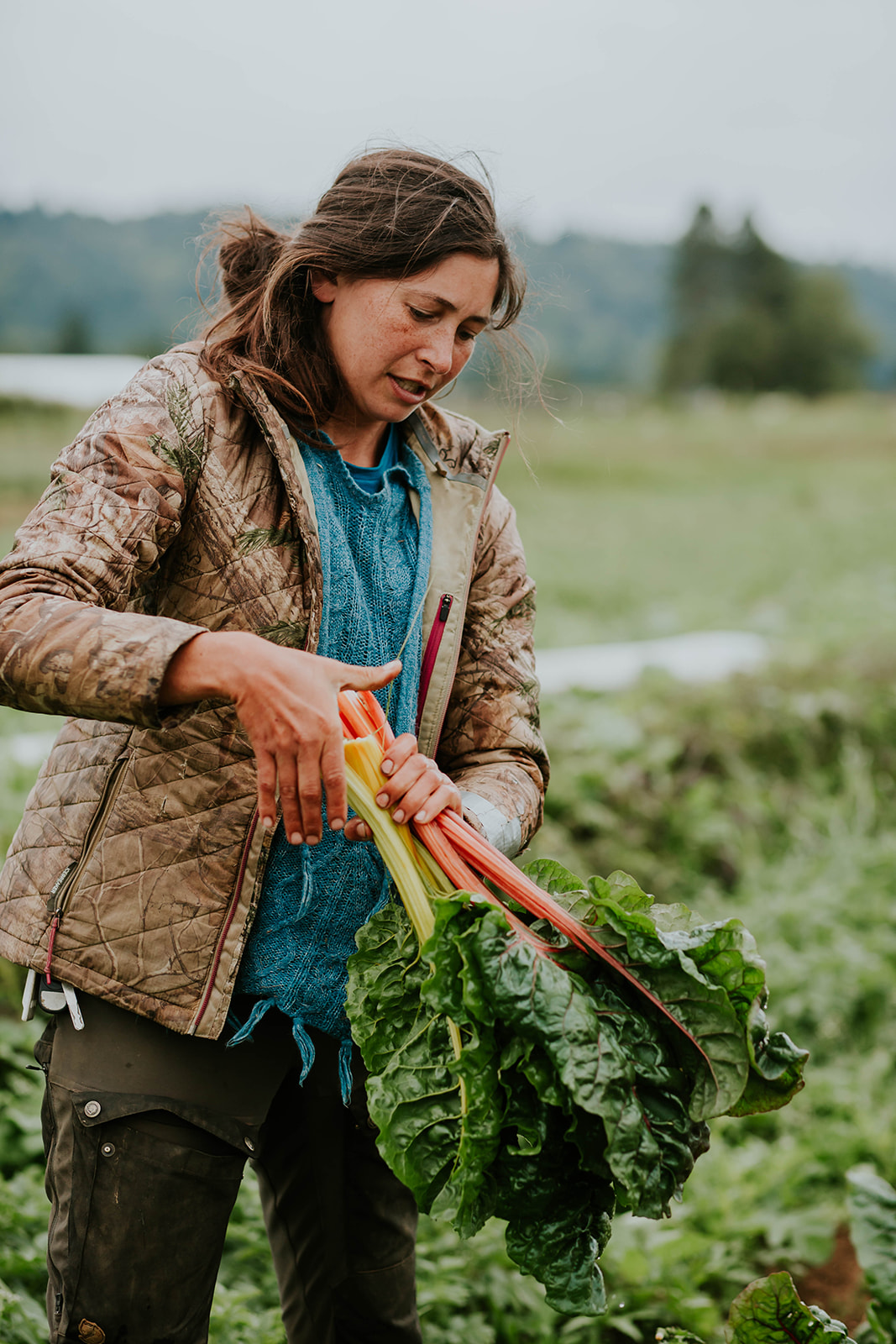
I want to explore the Thanksgiving bounty with you, dear reader. Thanksgiving events in some form occur in cultures around the world. This American tradition is an amalgamation of cultures. Cornucopias (Horn of plenty) come from Greek/Roman mythology, and resemble woven baskets used to store harvests leaving the harvester’s hands free to move about. I don’t doubt some shred of humanity was extended between Tribes of Turtle Island and Pilgrims resulting in feasts. There is also a horrific history of genocide, theft and destruction that occurred around Thanksgiving in particular.
Please take a moment to hear the Native Thanks Giving Address, though mainly from the six nations of the Haudenosaunee who’ve continued to live in North East America, it is spoken in some form in several languages and ultimately it is an intention in which many Native Peoples start every day. As the first stewards of this land we did not exhaustively extract the bounty, instead the land was nurtured and cared for as complex ecosystems with techniques we now call Traditional Ecological Knowledge. Known currently in westernized forms as food forests, permaculture, regenerative, no-till systems, etc. As the first stewards of this land we practiced everyday reverence and thanks to the nourishment provided, there was respect and the acknowledgement that all around us creatures, plants, landscapes, and weather maintained their own autonomy as they too walked this life alongside us.
The meal itself interests me deeply as an Indigenous farmer whose primary objective is to contribute to and strengthen Native Food Sovereignty in my community. The centerpiece of our day of thanks, Turkey, is Native to the Americas. The Diné nation’s creation story tells of when the First People and all the creatures came to the Fourth world. Turkey had the foresight to gather up many seeds from their original home and kept quiet, protecting the seeds for weeks before telling everyone what she had done and they all pitched in to plant the seeds so that they could have food in the new world.* Squash, peppers, sunflowers, potatoes, cranberries, hazelnuts, beans, corn, crab apples, they are all from the Americas. Cultivated, bred, and farmed in a variety of recognized and unrecognized agricultural practices. Many of the flavors missing were no doubt found in Native species, Wild Ramps instead of Onion, Amarantha versus Barley, young Cattail shoots instead of Leeks. In fact a disproportionately large portion of our modern diets are composed of Native First Foods found here in the Americas.
In my own tribe in Okanagan country there is a series of Sin-ka-lip (Coyote) Adventure stories. One in particular: When Coyote is poked from behind but every time Coyote turns around nothing is there. Coyote get’s clever and positions a knife ready to stab the invisible creature. Coyote’s knife sinks into the creature who materializes unable to stay cloaked when wounded. A monstrous Elk! Coyote cuts the Elk open and out comes a smaller Elk that we are familiar with today. Coyote tells the Elk that forever after the Elk will provide food to the People, offering up it’s hide to cloth and shelter them. With the monstrous elk carcass Coyote made pemmican, cakes of dried meat and berries with occasional nuts, spices and greens- nutrition for the adventures to come. Pemmican cakes were common across Turtle Island with a variety of recipes and ingredients, they became the foundation of the modern day MRE consumed by survivalists, hunters and the military.
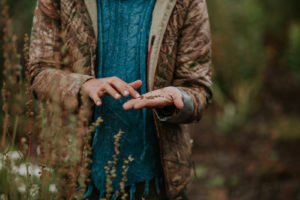
Good Rain Farm draws on Traditional Ecological Knowledge and practices, doing our best in modern times to practice every day reverence for the place we call home and gain our nourishment from. Part of this practice is appreciating the inherent bounty of late Summer and Autumn harvest but also learning and practicing the old ways of food preservation such as Pemmican and root cellars, canning, dehydrating, preserving the bounty to be consumed later in the depths of winter. Generally in the Pacific Northwest we have a rather temperate and hospitable climate, managing to grow Brassicas such as kale, broccoli, brussels whose genealogy derives from Europe, a food my French Ancestors steward no doubt. Yet, there is still demand for Tomatoes year round, for fresh strawberries in January, Bananas always. Between August and early November it’s an excellent time to practice your Traditional Food Ways as well as explore the flavors of community members- Master preserver Ola, Sakari Farm, Felton & Mary’s BBQ sauce and so many awesome providers. Your future self will thank your past self for preserving this bounty, especially during our brief two month famine period typically in March & April when Farmers balance wet earth with short but warming days, it’s difficult to produce much of anything in those months. We don’t always need fresh produce, with a little foresight we can save money, reduce our carbon footprint and continue to eat traditionally, seasonally, and sustainably without overly challenging our farmers and the ecological place we inhabit.
*A version of the Diné Bahaneʼ creation story can be found pinned in Good Rain Farm’s Instagram Stories.
All photos by Jamie Thrower, Studio XIII Photography
